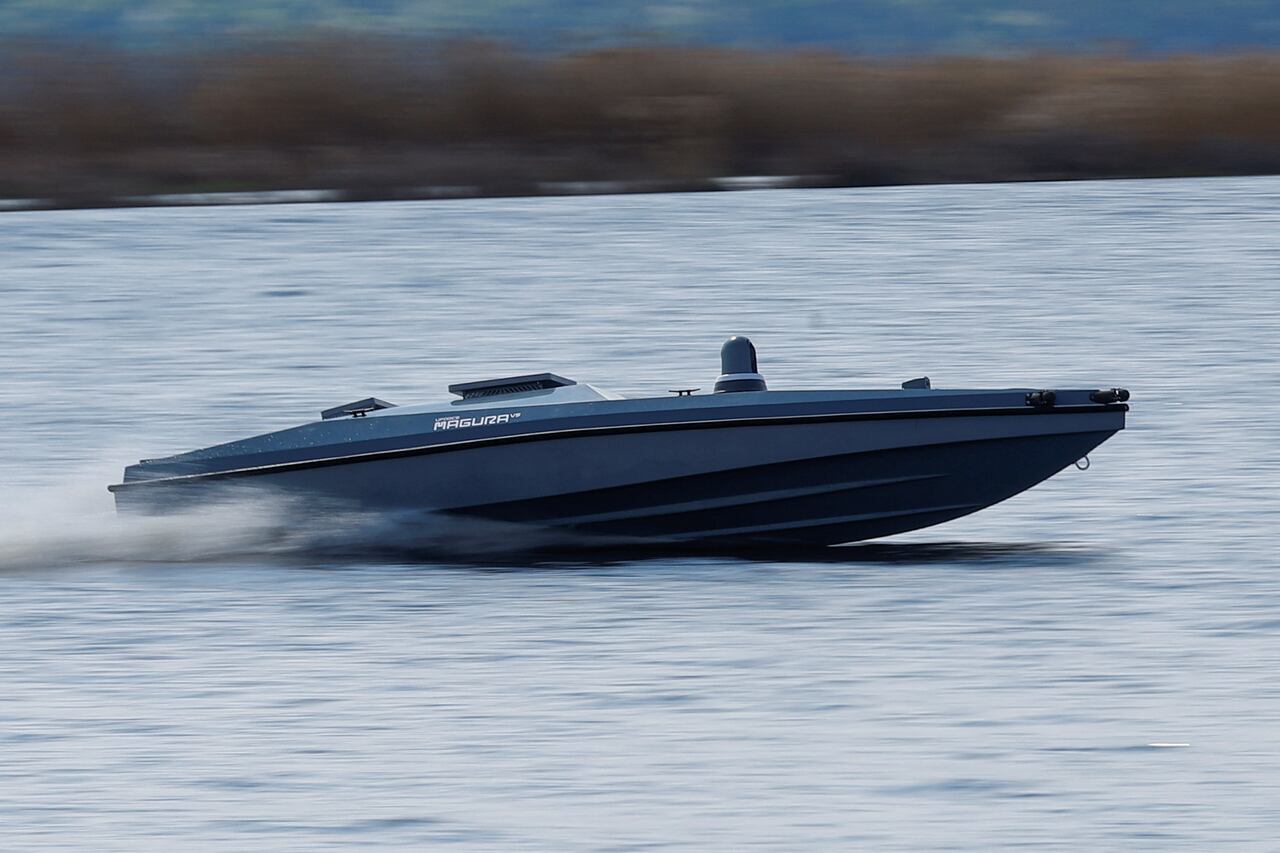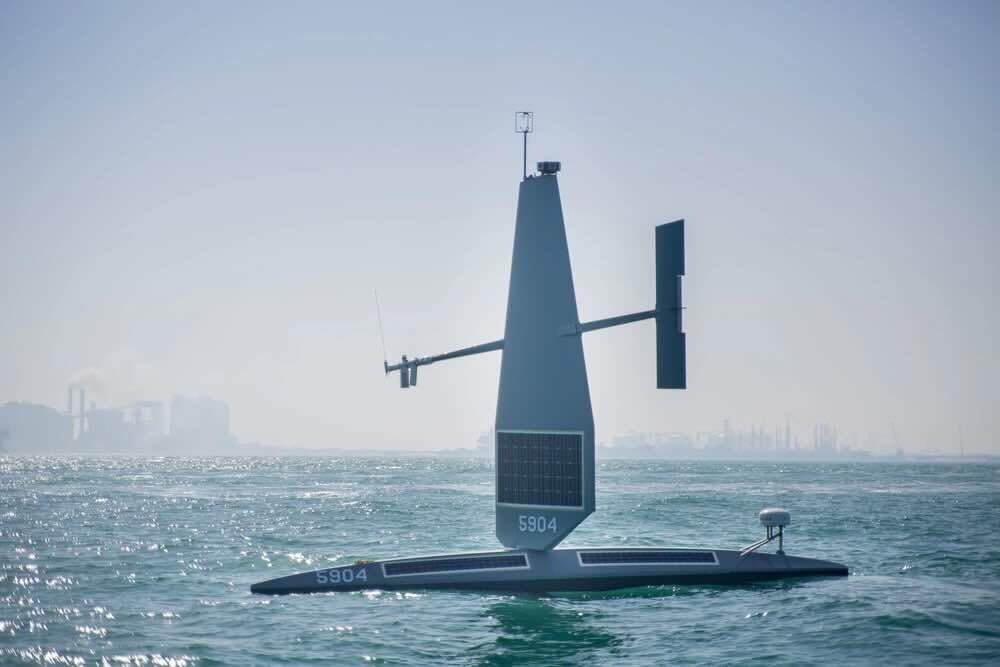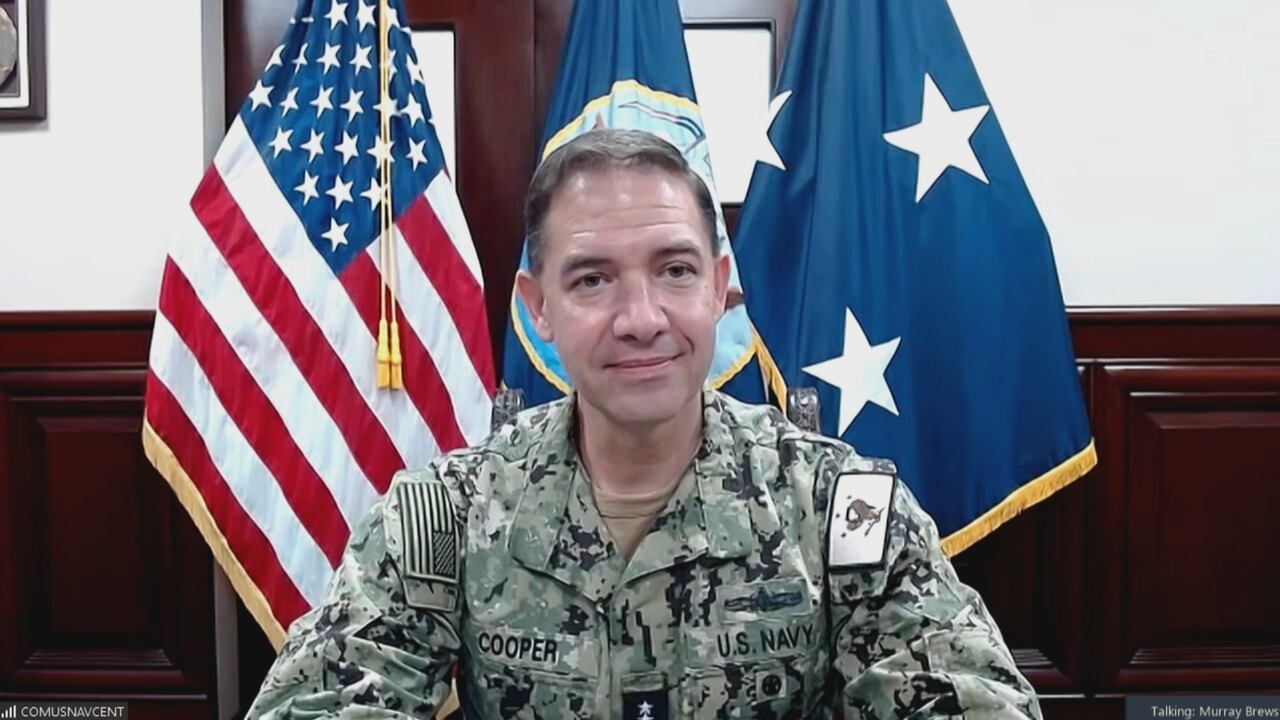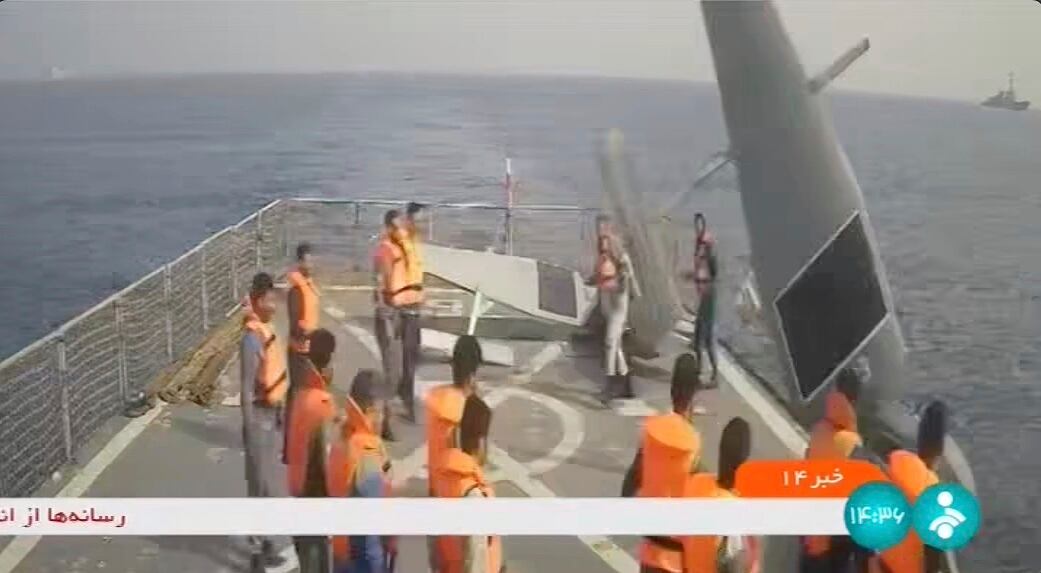Drones and AI are rewriting the rulebook on naval warfare — with uncertain consequences
They have an inconspicuous designation but the Ukrainian intelligence officers who belong to Group 13 have developed a formidable, far-reaching reputation.
Named after their leader within Ukraine’s defence intelligence agency — a man who goes by the nom de guerre Call Sign 13 — this unit of maritime drone operators has destroyed or damaged more than half a dozen Russian warships.
In a recent interview with CBC News at an undisclosed location along Ukraine’s southern coast, Call Sign 13 wore a mask and sunglasses to conceal his appearance. He spoke about how naval warfare is being reshaped by events in the Black Sea.
“I am protecting my country and I know that if I will not kill them, they will kill me,” he said.

The commander of the Ukrainian military intelligence unit known as Group 13, which has spearheaded the naval drone operations that have driven the Russian Black Sea fleet away from Crimea. (CBC News)
What we’re seeing in Ukraine may end up revolutionizing naval warfare, say top American and Canadian military leaders. At least one military historian, meanwhile, sees it as more of an evolution than a revolution.
At the very least, they say, it has the potential to upend geopolitical assumptions about naval power — including the belief that nations with large, well-established navies can operate with impunity near the coastlines of smaller countries.
The transformation of naval warfare by drones, driven in part by artificial intelligence, is happening at breathtaking speed. The waters off North America will likely soon be patrolled by remotely operated boats and submersibles whose surveillance of the coastline will be coordinated by AI technology. It’s already happened under U.S. leadership in the Middle East.
Who’s afraid of the Black Sea fleet?
What impresses militaries, defence planners and leaders around the world is how Ukraine — a country with virtually no navy — has used relentless drone boat and missile attacks to drive much of the Russian Black Sea fleet away from occupied Crimea, delivering an important humiliation to Moscow.
The motivation behind Ukraine’s naval drone program, said Call Sign 13, was more pragmatic than strategic: many of the Russian warships that were targeted either had the ability to conduct amphibious assaults or had launched cruise missiles that rained misery down on Ukrainian cities.
Group 13 plays a high-seas game of cat and mouse in reverse, launching small, remotely operated speed boats, known as Magura V5s, packed with over 200 kilograms of explosives.

A Ukrainian Magura V5 unmanned marine vehicle is seen on water during an exhibition of military equipment and weapons, amid Russia’s attack on Ukraine, at an undisclosed location in Ukraine April 13, 2024. (REUTERS/Valentyn Ogirenko)
These highly manoeuvrable craft zip over the waves at more than 80 kilometres an hour and hunt frigates and landing ships more than 10 times their size.
Once they find their prey, the operators drive the boats straight into the targets.
“I feel relieved and [I am] quite tired after [we] hit the target,” Call Sign 13 told CBC News through an interpreter.
Operators spend their missions hovering over suitcase-sized control boxes for hours. The missions are filled with tension and demand absolute concentration, because operators have to react quickly in a constantly shifting environment.
“You need to remember this, my target, it’s moving and it is a ship in the open sea. So you need to react very quickly,” said Call Sign 13.
The unit’s toughest mission to date, he said, was sinking the Russian patrol ship Sergey Kotov near the Kerch Strait off Crimea on March 4, 2024.
It was a modern warship, reportedly commissioned in May 2022. It had been damaged, but not destroyed, in September 2023.
Group 13’s attack on the Sergey Kotov involved a swarm of maritime drones. The attack was recorded by Russian sailors on a nearby ship; the video was obtained and shared online by Ukrainian officials.
When the Sergey Kotov sank, struck in the stern by a maritime drone, there was a collective sigh of relief among the Group 13 operators.
“We are now changing the rules of fighting in Ukraine,” said Call Sign 13. “We show that having a large fleet is not equivalent to power. Ukraine, which does not actually have its own navy, has completely displaced the navy of the Russian Federation.”

A sail drone belong to the US Navy’s Task Force 59 in the Persian Gulf. (US Defense Visual Information Distribution Service.)
The withdrawal of at least 10 Russian ships from Sevastopol to Novorossiysk “paralyzed” Moscow’s Black Sea operations, he said — and made prime targets of the members of Ukraine’s maritime intelligence group.
“The Russian Federation has a lot of missiles, rockets and different types of weapons and they even use them to hit small groups of people” like the maritime drone unit, Call Sign 13 said.
The members of Group 13 are immensely proud of their accomplishments. Knowing there’s a Russian missile with their name on it just proves to them that they’re having an impact.
“We are showing that the huge fleet of Russia is not an advantage and not that great,” said Call Sign 13.
Task Force 59 and the future of war at sea
The Canadian government’s new defence policy, released last month, acknowledged that high-volume, low-cost drones are changing the face of warfare in Ukraine and the Red Sea, and committed to preparing the country for such a future.
To get a better sense of where this technology is going, you have to look at the experiments conducted by the U.S. Fifth Fleet in the Persian Gulf and the Red Sea over the last three years.
Using commercially available dual-use technology, the Americans and their allies have managed to field a small fleet of remote, autonomous surface and subsurface drones whose constant data collection is managed and analyzed by artificial intelligence.
It’s known as Task Force 59.

Vice-Admiral Brad Cooper, the former commander of the U.S. Fifth Fleet. The fleet has created a special task force of AI-linked drones and autonomous ships that carries out surveillance in the Persian Gulf and the Arabian Sea. (CBC News)
“In the simplest of terms, just imagine a small vessel, three meters long to 10 meters long,” said U.S. Vice-Admiral Brad Cooper, who served as fleet commander until February and launched the remote technology experiments. “And on this platform, you have radar and have very sophisticated cameras controlled by satellite.”
The platforms provide persistent coverage in ways humans cannot.
“You put one or two of them out there, you link them together,” Cooper said. “And artificial intelligence allows you to map the pattern of life and see what’s around them. And when something is different, artificial intelligence flags that platform and sends it back to a human operator in a Naval Operations Center.”
For much of its existence, the drone task force in the Gulf region has been limited to surveillance. Just recently, it began experiments with sea drones carrying munitions.
Using AI to collate surveillance data and tell sailors what to look at is benign enough — but when the technology crosses the threshold into target recognition, moral and legal concerns start to come to the surface.
Cooper, who spoke to CBC News last year about Task Force 59, was asked whether he had concerns about introducing artificial intelligence into the system.
“I’ve had no concerns about it whatsoever,” he said. “We have a mature technology. It’s reliable. And most importantly, we have a human being ultimately making decisions.”
Not everyone is convinced. As AI becomes more deeply embedded in military operations — migrating from surveillance to assistance in targeting — voices calling for international regulation are getting louder.
Branka Marijan of Project Ploughshares said the technology behind some of these weapons systems is immature and error-prone.
“Sometimes I get this question — what keeps you up at night? And I think a lot of people think … like the Terminator, you know, killer robots,” she said. “But it’s actually this deployment of technology that’s not ready for these contexts.
“Conflict zones are very complex … And if we deploy technologies that are not ready, we risk sometimes escalating the conflicts in place, and other times really prolonging them.”
Canada’s new defence policy nods to how AI affects cyberwarfare and disinformation, but remains largely silent on how the Canadian military will use it.
The Canadian navy is only at the early stages of adopting remote technology. The Department of National Defence recently awarded a $50 million contract for the purchase of remote underwater mine-hunters but appears to be treading lightly on introducing autonomous systems. That’s despite the fact that several Canadian technology companies are already on the market with cutting-edge systems.

In this image from Iranian state television, Iranian navy sailors throw an American sea drone overboard in the Red Sea on Thursday, Sept. 1, 2022. (Iranian state television via Associated Press)
“I think we’re seeing the value of uncrewed and autonomous vessels,” said Vice-Admiral Angus Topshee, commander of the Canadian navy.
Ukraine and the United States have developed and deployed naval drones at a lightning pace by adapting commercially-available technology to create relatively cheap and lethal equipment.
Canada moves cautiously into drone warfare
Topshee said Canada is moving toward that technology as well, but will approach it with caution.
“How do you ensure that it’s still a human making the decision? I think it’s really important that we don’t have machines that are making decisions as to whether or not to kill someone or not kill someone,” said Topshee.

Vice-Admiral Angus Topshee, commander of the Royal Canadian Navy. (CBC News)
“So how do you create the ability to do that if I don’t need to put a sailor at risk? I love the idea of being able to go out there to achieve an effect [on a mission] and not put a sailor at risk.”
Historian Marc Milner said he’s reluctant to describe the emergence of autonomous drones as a turning point in naval warfare — although he acknowledged the speed at which drones are entering the field is “alarming.”
He compared the use of remotely operated boats to ram and sink warships to the development of the torpedo in the mid-19th century. The torpedo prompted a whole series of countermeasures to foil such attacks, as did the introduction of ship-killing ballistic missiles in the 1970s.
Milner said the Canadian navy was behind the curve when the missile threat emerged, but with the introduction of the Halifax-class frigates and modifications to its now-retired destroyers, it eventually caught up.
It will have to do so again, he said.
“It’s the weaponization of modern technology which is both alarming and fascinating,” said Milner. “So often I say to my students … for every good piece of technology that we develop, there’s somebody sitting somewhere saying, ‘How can I make a bomb?'”
